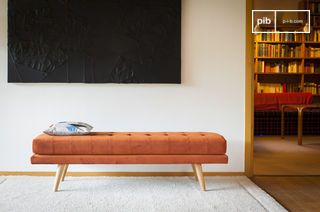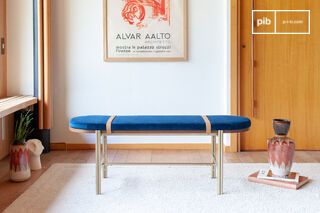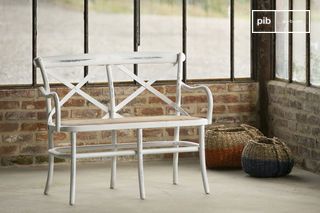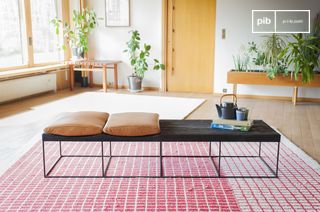Living room benches
Living-room benches provide additional seating in a space focused on comfort and circulation. Placed along a wall, in the axis of a sofa or at the back of a room, they provide structure without adding weight. Their elongated, often backless format allows them to blend seamlessly into a variety of configurations. This category includes open models, upholstered or combined with discreet storage. The lounge bench complements existing functions without altering their balance.
read more >Filters
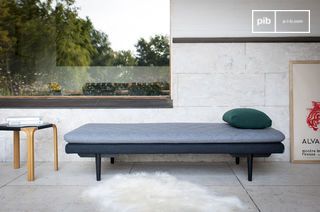
Daybed benchNorilsk
£1200
10 festive days
10% off our tables and consoles
Welcome your guests in style · Limited stock

Role and positioning of the lounge bench in space
A lounge bench is used as secondary seating or as a transitional element in an interior layout. Unlike a sofa or armchair, it is not intended for prolonged use, but rather for occasional or complementary use. It is often installed opposite or perpendicular to a sofa, or along a wall without fixed furniture. This positioning is intended to structure the space without obstructing circulation or disrupting the hierarchy of functions already in place. The bench can also act as an implicit separation between two zones in an open-plan living room, for example between the living area and a reading corner.
Typologies, materials and visual relationships
Living-room benches can be solid, with legs, or combined with a discreet box. Some models are upholstered, with or without a fixed cushion, while others favor a raw wood or metal surface. Common materials include oak, walnut, painted steel or stretched textile. The choice depends on coherence with the other pieces of furniture. A wooden bench on a light-colored floor creates a dancelike effect, while a slim, black metal frame visually lightens the overall effect. Upholstered benches introduce a direct link with the main seating, without competing with it.
Complementary uses and articulation with existing furniture
The lounge bench is used to sit briefly, place an object, or welcome guests as a complement to the sofa. It can also function as a temporary surface for a tray, book or plaid. In its long, low version, it accompanies a wall composition or balances out an empty area. Its use remains flexible, but must respect the available dimensions so as not to compromise passage distances. By integrating a bench into the layout of the living room, we introduce a low, legible volume that adjusts to functions without redefining the overall structure of the room.
The living room bench acts as a linking piece of furniture. It links uses without multiplying visual masses, adapting to the existing geometry and circulation logic of the space.
The living-room bench acts as a linking piece
